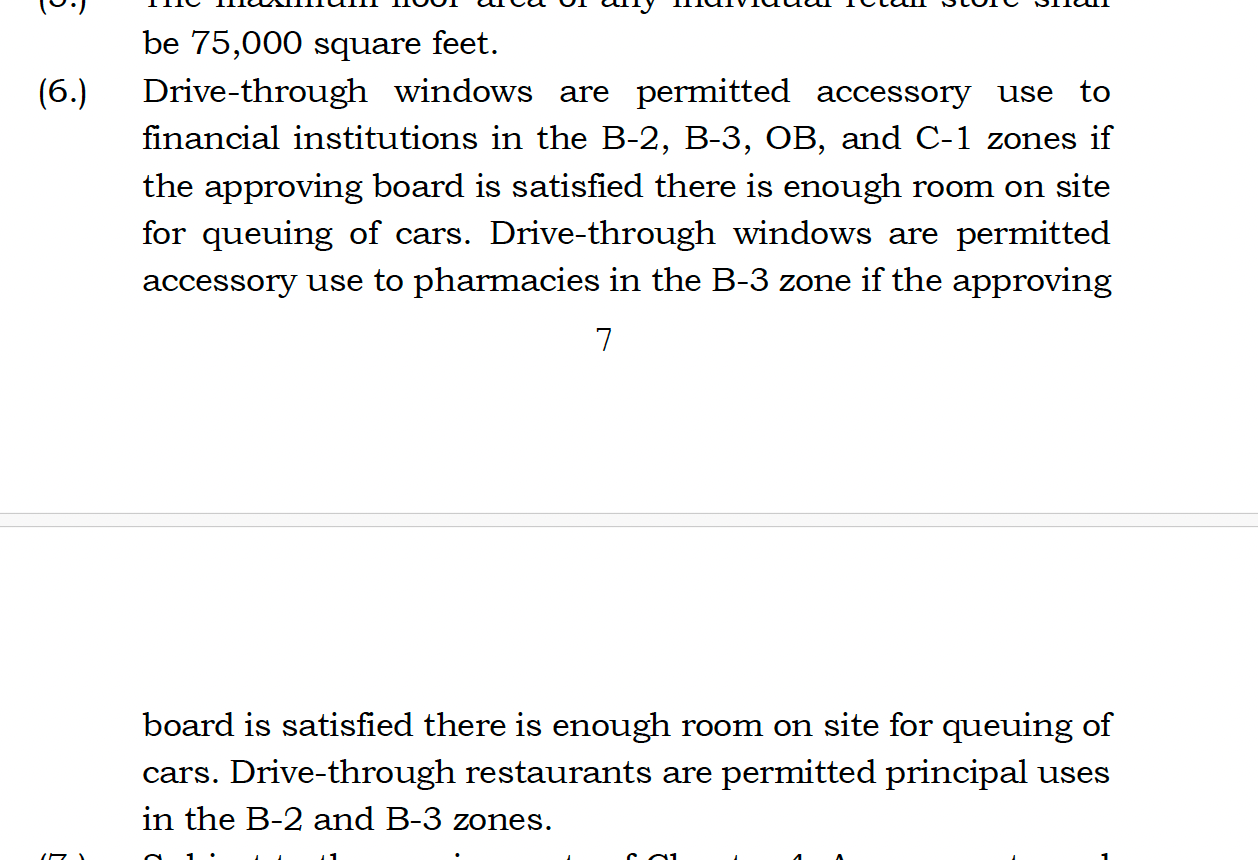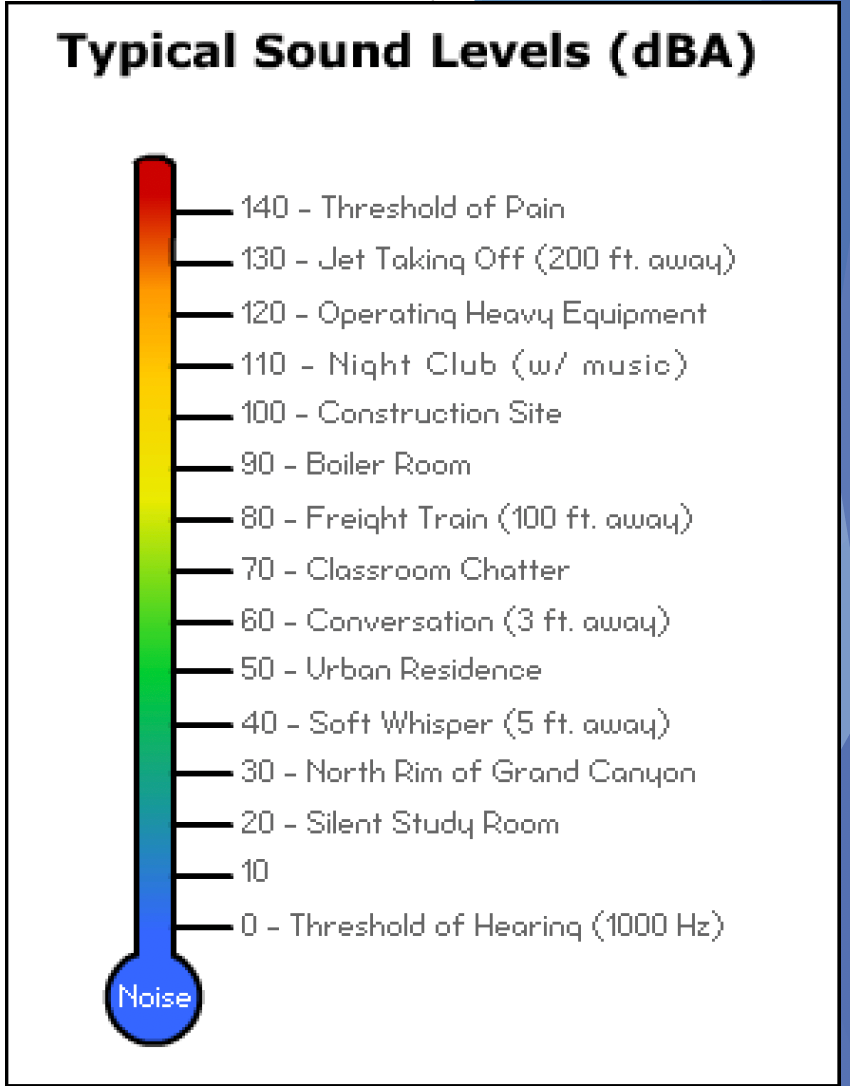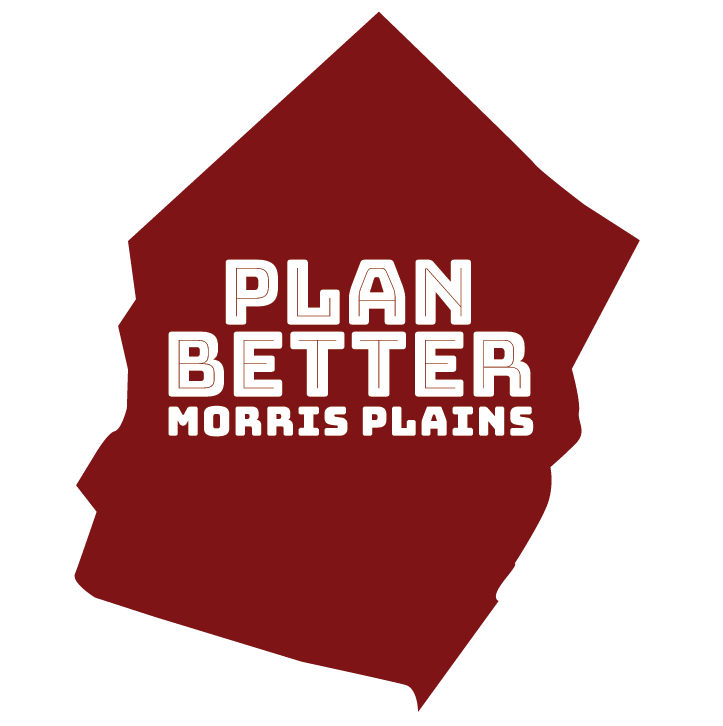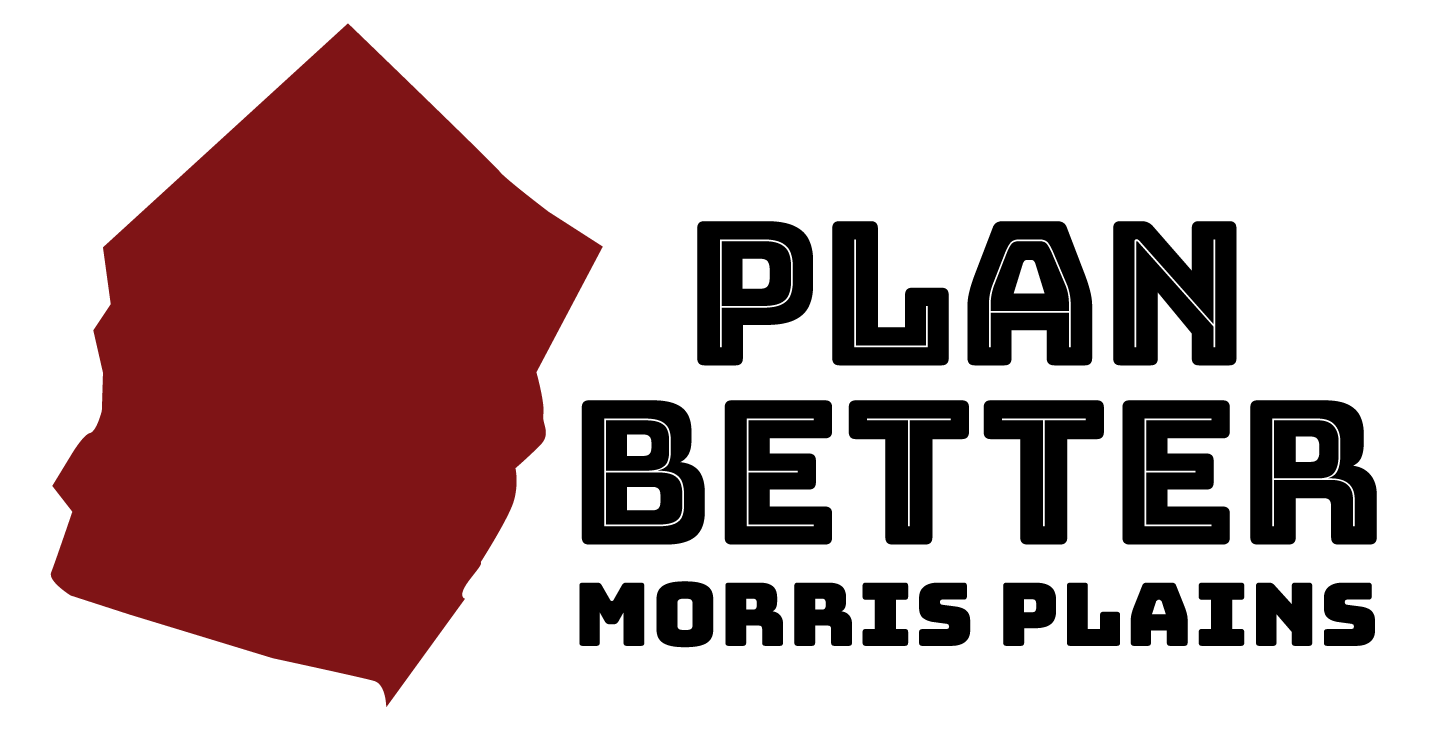Hot Topic FAQs
Speedwell Avenue McDonald's Drive-Through
Below are frequently asked questions about the two-lane fast-food drive-through planned for 413 and 435 Speedwell Avenue, a subject of controversy and extensive community comment from July through December 2024. Relevant videos and documents are linked where applicable.
- Is a drive-through restaurant a permitted use in the B2 and B3 zones?
- Does a permitted use require the Planning Board to approve an application?
- What effects would a two-lane fast-food drive-through have on Speedwell Avenue traffic?
- For comparison, is there a similar McDonald’s in a comparable location?
- What air quality concerns may impact nearby residents, students and others?
- What level of noise can neighbors expect from the two-lane drive-through?
- Are there anticipated smells or odors from the drive-through?
- Are rodents a concern related to the drive-through?
- What are the parking concerns related to the drive-through?
- Is a two-lane drive-through preferable to an empty building and vacant lot?
- Is opposition to a two-lane fast-food drive-through on Speedwell Ave. the same as opposition to McDonald’s in general?
- Are there studies about the effects of drive-through restaurants on downtowns?
Yes. In October 2023, the Borough Council approved, by a 4-2 vote, Ordinance No. 14-23, a 15-page document intended to update permitted uses in the Morris Plains downtown area to encourage businesses to open here.
However, even if an application submitted to the Planning Board is for an approved use, applicants may still be required to request one or more variances if the proposed plan does not comply with other requirements of the town’s code, such as the number of parking spaces, the number of signs, etc.
The language in Ordinance No.14-2023 restricts queuing of cars in the case of financial institutions and pharmacies, but not drive-through restaurants. The Planning Board’s reasons for this are not known.
It is also unclear whether the Planning Board conducted a comprehensive assessment of the B2 and B3 zones’ capacity to handle the expected traffic volumes associated with the approved uses.

2. Does a permitted use require the Planning Board to approve an application?
No. The application included variance requests seeking exceptions to zoning regulations. The Planning Board is not required to approve such requests. It must adequately review the positive and negative criteria of the requested variances and decide accordingly per NJ Municipal Land Use Law.
The McDonald’s application included eight variance requests. (For a list of the variances requested by this project, see page 10 of the application.)
Of particular concern, and not effectively and completely reviewed by the Planning Board, are the following:
- 32 parking spaces (41 required).
- Smaller parking stalls of 9’ x 18’ (10’ by 20’ required).
- No loading zone for a full-size tractor-trailer truck (one loading zone is required).
The McDonald’s application also failed to request variances required for delivery truck access to Dayton Road and for the parking spots that fail to meet Borough standards for curbed overhangs and requirements for front yard setbacks.
In addition, expert witnesses speaking on behalf of the public raised significant questions that were not adequately addressed by the applicant’s experts or further explored by members of the Planning Board or Borough-hired experts. These included concerns about:
- Traffic
- Pedestrian/biker safety (crosswalk)
- Environmental impact
- Noise
- Odor
Finally, the Planning Board could have given weight to the Community Vision Statement in the Master Plan Revision Report of October 2018, which says on page 47:
Morris Plains is a safe, healthy and vibrant small town that welcomes a diverse cross-section of residents, visitors and business with a focus on accessibility, sustainability, affordability, cultural enhancement and educational excellence. The Borough seeks innovative and sustainable solutions to mitigate the impacts of future development on its roadways and infrastructure and, most importantly, maintain the small-town character of Morris Plains which makes it such a desirable place to live.
3. What effects would a two-lane fast-food drive-through have on Speedwell Avenue traffic?
As an already overburdened two-lane county road, developed circa 1927, Speedwell Avenue in downtown Morris Plains is not equipped to handle the additional traffic and safety issues a two-lane drive-through will create.
With no turning lane in this area of Speedwell Avenue and an ever-higher volume of vehicles on Route 202, vehicles will be delayed in making a left turn into the proposed drive-through restaurant, blocking one of the two lanes. Congestion, traffic slowdowns and unsafe driving practices will be the result.
Who “owns” traffic problems in town?
McDonald’s will have no obligation to mitigate or manage any gridlock and unsafe conditions its restaurant will create. Instead, that burden falls on residents, businesses and town officials.
Enforcing code and traffic regulations will strain the resources of the Morris Plains Police Department and those of the Borough’s Construction Office and part-time Zoning Officer.
Vehicle Volumes are Certain to Increase
The applicant’s traffic expert estimated that 710 cars will be entering and exiting the drive-through restaurant property daily. The applicant’s attorney mentioned expectations of between 700 and 800 customers daily. (See the video of the
November 12, 2024 Planning Board meeting.)
However, in a similar case in Wilmette, Illinois, the lawyer representing McDonald’s said that McDonald's "most current and most efficient" drive-through design would typically handle about 1,000 daily transactions.
In addition, the McDonald’s traffic expert’s analysis did not consider the following factors:
- A 2013 county study gave low marks for congestion and safety at the intersection of East Hanover Avenue at Speedwell. Among other issues, the study found that the southbound morning queue at Speedwell/East Hanover averaged approximately 1,000 feet in the morning (starting the queue at Dayton Road—the location of the proposed two-lane drive-through). Recommendations were made to improve conditions. Twelve years later, these recommendations have not been incorporated, and traffic volume has continued to grow.
- Increased affordable housing requirements over the next decade will lead to the creation of more than 10,000 new units—and the accompanying additional traffic—in Morris Plains and the neighboring towns of Parsippany, Morristown, Morris Township and Hanover Township. (See Mayor’s letter, page 3, November 2024 Plains Talk.)
- The impact of McDelivery: McDonald’s offers delivery at “over 85% of McDonald's restaurants,” according to its 2023 Annual Report, and McDonald’s has stated its commitment to increasing visits to its drive-through restaurants and growing its McDelivery service, both of which will increase traffic to the planned Speedwell Ave. location. From the McDonald’s 2023 Annual Report, pages 9-10:
- The Company is scaling this [delivery] capability, expecting to increase the percentage of delivery business originating from its mobile app to 30% by 2027.
McDonald’s has
partnered with DoorDash and Uber Eats, which will add time-pressed delivery drivers into the Speedwell Avenue traffic pattern.
Questions About the Applicant’s Traffic Study
The applicant’s traffic data is based on limited observations on:
- Wednesday, May 1, 2024, 7 to 9 a.m. and 4:30 to 6:30 p.m.
- Saturday, May 4, 2024. 11 a.m. to 2 p.m.
The applicant’s expert did not provide:
- A rationale for why only these dates and times were selected
- Evidence that these times represented typical weekday or weekend patterns
- Evidence that they aligned with typical traffic patterns for the proposed fast-food drive-through
- Consideration of traffic from regional sports events at nearby Central Park of Morris County
- An analysis of peak after-school hours and weekday lunchtime traffic
- Projections accounting for McDonald’s increased use of promotions to drive traffic
- Traffic volume estimates beyond two years
A gap analysis—a study that looks at the number and length of gaps between vehicles in a traffic stream—was performed by the applicant’s traffic expert on Saturday, September 7, 2024 and Thursday, September 12, 2024. The testimony of a certified professional traffic engineer (December 16, 2024 video, beginning at time stamp 23:30), indicated that the analysis did not accurately represent actual traffic conditions or the road’s overcapacity state.
(For more details on the gap analysis, please refer to the Planning Board video cited above or to the minutes for December 16, 2024.)
4. For comparison, is there a similar McDonald’s in a comparable location?
No. Research revealed no two-lane drive-through McDonald's directly on residential streets and across from a middle school and a nursery school, as the proposed Morris Plains site will be.
The applicant’s traffic expert cited six locations in New Jersey as being comparable, based on their proximity to two-lane roads:
- 537 Broadway, Bayonne
- 568 Myrtle Ave, Boonton
- 192 Essex Street, Hackensack
- 403 Delsea Drive, Malaga
- 372 NJ-71, West Long Branch
- 43A Marshall Hill Road, West Milford
However, these locations differ significantly. Of the six comparables cited:
- One location (Hackensack) is also situated on a four-lane road.
- Three locations (Boonton, Malaga, West Milford) are within shopping centers and accessible via parking lots or traffic light access.
- Two locations (Hackensack, Bayonne) are in highly urbanized commercial zones.
- All six have traffic management modifications such as turn restrictions, traffic lights or dedicated turning lanes.
Unlike these examples,
the Speedwell Avenue site has no planned traffic modifications, raising concerns about traffic backups and unsafe maneuvers by drivers—with all the peril that creates for walkers and bikers.
5. What air quality concerns may impact nearby residents, students and others?
Increased traffic, potential gridlock during rush hours and the idling of drive-through customers’ cars and delivery cars, along with high-volume cooking aerosol emissions from the restaurant, will inevitably increase the emission of particulate matter and other pollutants into the air. These emissions will likely contribute to lower air quality. This could pose increased cardiovascular and respiratory health risks for the surrounding residents and pedestrians looking to enjoy Morris Plains’ main street.
However, no environmental impact study was conducted for this project. According to Borough officials, McDonald’s must prove that it complies with the local air quality rules and
other performance standards
after the restaurant is operational. As of now, there is no established plan for how this will be monitored or enforced. (See the discussion at the
February 10, 2025 Planning Board meeting, beginning at time stamp 7:22.)
Morris Plains Land Development Rules state that:
“No substances shall be emitted into the atmosphere in quantities which are injurious to human, plant or animal life or to property or which interfere unreasonably with the comfortable enjoyment of life or property anywhere in the Borough. All provisions of the New Jersey Air Pollution Control Act (N.J.A.C, 7:27, N.J.A.C.7:27A, N.J.A.C. 7:27B), as amended, or the regulations contained in this section, whichever shall be more stringent, shall be complied with.”
The two-lane drive-through on Speedwell Avenue will be in a school zone. Children in the area with asthma or other respiratory issues are at risk of increased traffic-generated pollution in the air, as this study shows.
6. What level of noise can neighbors expect from the two-lane drive-through?
The applicant’s civil engineer testified that the proposed McDonald’s would have a sound level under 20 dBA (decibels A) at the property line. (See time stamp 1:28:16 in the September 16 Planning Board video.) Given that the OSHA Technical Manual rates 20 dBA as equivalent to that of a “Silent Study Room,” this estimate seems highly questionable.
The applicant did not provide a report that indicated the combined noise effects of the drive-through’s speaker system, idling cars, HVAC, and full-size tractor-trailer delivery trucks.
As with air quality, according to Borough officials, McDonald’s will need to prove that they are in compliance with state noise regulations. However, the Borough’s engineer admitted that there is no plan yet on how that will be done. (February 10, 2025 meeting, beginning at time stamp 7:22)
The Bayonne McDonald’s on Broadway was cited by two different applicant experts (planner and traffic engineer) as comparable to the planned Morris Plains location. Despite that, the Planning Board attorney ruled that the video below, taken during a delivery at the same Bayonne McDonald’s, was “not relevant” and would not allow it to be shown at a hearing. This video would have shown an idling delivery truck clearly louder than 20 dBA.
For more information on environmental concerns regarding the proposed two-lane fast-food drive-through in Morris Plains, see “Environmental Testimony for Proposed Morris Plains McDonald’s.”

Recording of noise at “comparable” location in Bayonne, NJ.
7. Are there anticipated smells or odors from the drive-through?
On September 16, 2024, testimony from the applicant’s lawyer (time stamp in the Planning Board meeting video: 26:24) stated that a two-phase scrubber would remove 90% of the grease aerosols. No data was presented to demonstrate compliance with the Borough’s odor performance standards.
Without data on the volume of grease aerosols emitted, the question remains: 90% of what? There is no assurance that odors won’t be detected at the property line.
Additionally, the applicant did not address potential odors from delivery and grease removal trucks and vehicle emissions from the drive-through.
At the February 10, 2025
Planning Board meeting (discussion begins at time stamp 7:22), Borough officials acknowledged that:
- Odor performance standards were not in place when the Chipotle and Chick-fil-A were approved for the Kohl’s shopping center. Consequently, odor levels were not monitored.
- No plan is yet in place to monitor odors from the planned two-lane drive-through.
As with air quality and noise performance standards, the Borough of Morris Plains does not have the necessary equipment to measure odors.
8. Are rodents a concern related to the drive-through?
Yes. Rodents are a frequent concern with fast-food establishments due to discarded food waste and grease residue. Without rigorous waste management and pest control, increased rodent activity may occur.
No independent assessment has been made to determine whether sanitation protocols followed by McDonald’s will be sufficient. Surrounding properties may experience rodent problems if proper waste containment is not maintained.
Monitoring and accountability measures should be established before construction.
As recently as Fall 2024, residents on Hillview and Rosedale Avenues, directly across from the planned McDonald’s site, experienced a neighborhood-wide rat infestation over several months, the source of which was never located/made publicly known. Area construction and water main problems may have been contributing factors.
Whatever the reason for the infestation, homeowners incurred extermination costs and citations from the Board of Health for a problem they did not cause. Homeowners near the proposed McDonald’s location have concerns about future rodent infestations on their properties, how they will be handled at the source, and the personal burden and damages they may incur as a result.
9. What are the parking concerns related to the drive-through?
The project is located on a residential street and a two-lane road that does not allow parking. With insufficient parking and space on the site, customers will likely park on the surrounding streets of Hillview, Dayton and Canfield, depriving residents of on-street parking and causing visibility and safety issues for pedestrians.
Some of the other concerns include:
- Borough code requires 41 spaces, but the applicant is providing only 32 spaces through a variance.
- Smaller parking spaces (9’x18’) instead of the required 10’x20’ have been allowed through a variance. Community Planning Consultant Peter G, Steck testified in the December 9 Planning Board meeting (starting at time stamp: 2: 50:30) that smaller spaces cause inconvenience or safety issues for patrons, particularly for families with strollers or baby carriers.
- The lack of a safe pedestrian entry to the building will force people to walk across drive-through lines or through incoming traffic.
- No loading zone is on the site, although a loading zone is required by Borough code. This means parking spaces will be blocked by the full-size tractor-trailer truck making deliveries twice a week.
- No definitive employee parking information is raising concerns about available customer spaces.
- The applicant has not clarified where McDonald’s delivery drivers will wait and how that will affect available parking for customers.
10. Is a two-lane drive-through preferable to an empty building and vacant lot?
According to Borough code, property owners are required to maintain even vacant properties in a clean, safe, and sanitary condition. When owners fail to do so, it becomes the responsibility of Borough residents and the Zoning Officer to report and pursue remediation, which can be a lengthy and ineffective process.
Plan Better Morris Plains believes that vacant properties should be maintained properly and that Borough resources should be allocated for effective enforcement.
Additionally, Plan Better Morris Plains advocates for development approvals that:
- Are carefully evaluated against all town and state regulations and the Borough’s Master Plan,
- Prioritize the well-being of residents and businesses,
- Align with a clear, comprehensive planning vision for the Borough.
11. Is opposition to a two-lane fast-food drive-through on Speedwell Ave. the same as opposition to McDonald’s in general?
No. The issue is not a McDonald’s restaurant. The issue is trying to fit a two-lane drive-through into a space:
- That is clearly too small for it.
- That abuts a residential street on one side and will have a negative impact on additional residential streets in the immediate vicinity.
- That is on a two-lane county road with no turning lanes, which is already gridlocked at rush hour and at other times.
- That is directly across from a middle school and nursery school.
- That has not been properly evaluated for environmental impact and will adversely affect the local environment with at least 700+ cars per day entering, exiting, and idling in the lot.
Residents of Morris Plains are eager to support new businesses within city limits. Still, carefully considering a location that best fits a business’s specifics is essential to long-term success without detriment.
12. Are there studies about the effects of drive-through restaurants on downtowns?
Yes. Here are a few examples:
Drive-throughs Are Creating Trouble for Cities and Towns
“Magnets of traffic and congestion, drive-throughs discourage walking, public transit use, and visits to neighboring businesses. They also lead to accidents with pedestrians, cyclists, and other cars, and contradict the environmental and livability goals of many communities.”
Mega Drive-Throughs Explain Everything Wrong with Cities
“Drive-throughs, perhaps more than any other single building style work against … livability goals. They worsen traffic congestion and release climate-warming air pollution from cars idling in line. . . .And they increase the chances of collisions with pedestrians and cyclists . . .because they require cuts in the sidewalk to accommodate cars going in and out.”
Fast-Food Drive-through Accidents: Who is at Fault?
“Drive-through accidents and car wrecks in the parking lots of fast food restaurants are more common than you might think.”
More Cities Ponder the End of Drive-Thrus
“the detractions of drive-thrus are evident…They require huge amounts of asphalt, which exacerbates the urban heat island effect common to many paved-over areas. More notably, there’s the impact on air quality, with motorists spewing emissions as they inch forward for that crispy chicken sandwich….”
Beyond Convenience: The Case for Curbing Drive-Thrus in Cities
“Neighborhoods designed before the advent of cars allowed people to easily walk or take transit to a variety of essential goods and services. City codes encouraged large shop windows to allow people to see what was for sale and doors that faced the street for easy access. This began to change when cities started prioritizing cars. Cities and businesses started focusing on replacing walkable, pedestrian-oriented commercial corridors with infrastructure that catered to cars This resulted in changes to our built environment, like moving building entrances from the sidewalk to a parking lot.”
Prohibit or Limit the Use of Drive-Through Services
“Drivers are less likely to be alert at drive-throughs, which is dangerous for bicyclists and pedestrians in urban areas. [2] The Minnesota Department of Transportation observed alarming associations between the density of “urban driveways” (such as drive-throughs) and pedestrian crash rates. [3] Another study notes an increase of pedestrian accidents in low-income areas with a higher density of fast food restaurants.”

